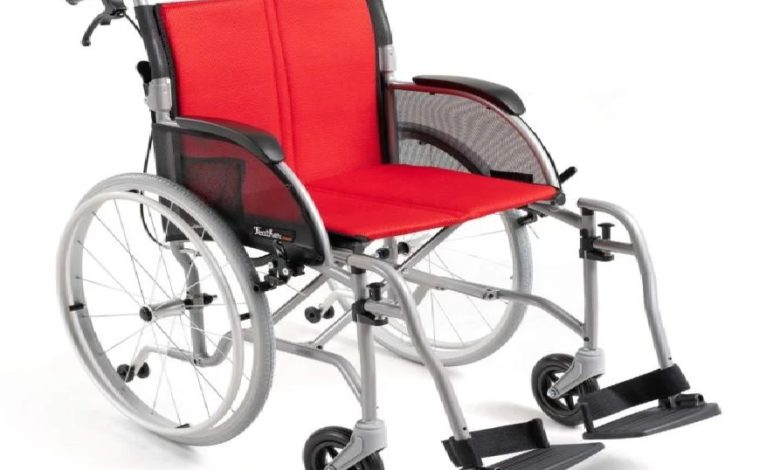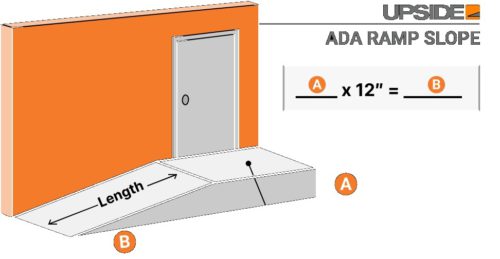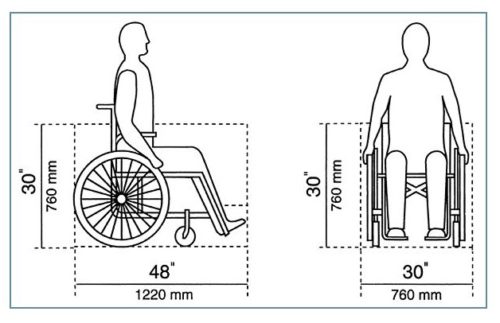Unveiling Wheelchair Widths & Ramp Dimensions

Table of Contents
Unveiling Wheelchair Widths & Ramp Dimensions
Wheeling Through the Basics: Understanding Wheelchair Widths
Imagine yourself cruising down the sidewalk on a sunny day. Suddenly, you approach a narrow pathway. Will your wheelchair fit through? Knowing a wheelchair’s width is crucial for navigating everyday life.
There isn’t a single, universal width for wheelchairs. They come in various sizes to accommodate different user needs. However, there is a standard width that serves as a good starting point.
Unveiling the Standard Wheelchair Width
A standard wheelchair typically measures between 24 and 26 inches wide. This measurement refers to the broadest part of the chair, usually at the wheels. This standard size allows for comfortable maneuvering in most indoor spaces, doorways, and hallways.
It’s important to note that this is just a general guideline. Wheelchair width can vary depending on several factors, including:
- User’s size and needs: Larger individuals may require a wider chair for better support and comfort.
- Type of wheelchair: Some specialty wheelchairs, like sports wheelchairs, might be narrower for increased agility.
- Armrests: Detachable or removable armrests can slightly adjust the overall width.
Image of standard wheelchair width measurement
Exploring Different Wheelchair Widths
While the standard size reigns supreme, there’s a broader world of wheelchair options available. Let’s explore some variations:
- Lightweight or ultralightweight wheelchairs: These chairs prioritize portability and might have a narrower width (around 16 to 20 inches) for easier lifting and storage.
- Heavy-duty wheelchairs: Designed for users who require extra support, these chairs can be more comprehensive (up to 30 inches or more) to accommodate increased weight capacity.
- Power wheelchairs: The base width of a power wheelchair can be similar to a standard manual chair, but consider the additional width of joystick controls or armrests.
Building Bridges: Understanding Wheelchair Ramp Dimensions
Wheelchair ramps are lifesavers, ensuring easy access to different levels. But just like wheelchairs, ramps also have specific width requirements.
The standard width for a wheelchair ramp is at least 36 inches. This allows for comfortable maneuvering with enough space for a user to pass another person or object safely.
Here’s a breakdown of some key ramp dimension considerations:
- Minimum width: As mentioned earlier, 36 inches is the minimum recommended width for a wheelchair ramp.
- Clearance: Ensure there are no overhanging obstacles that might obstruct the user’s movement on the ramp.
- Handrails: Installing handrails on both sides of the ramp provides additional support and stability.
- Slope: The ramp’s slope should not be too steep. The standard recommended slope is 1:12 (one inch of rise for every 12 inches of length).
Image of wheelchair ramp with proper dimensions

Making the Right Choice: Pros and Cons of Different Wheelchair Widths
Choosing the correct wheelchair width is crucial for comfort, safety, and maneuverability. Here’s a quick comparison of different widths to help you decide:
| Width | Pros | Cons |
| Standard (24-26 inches) | Versatile and fits most doorways | Might not be suitable for all users |
| Narrow (16-20 inches) | Lightweight and portable | May limit comfort and stability |
| Wide (over 30 inches) | Increased support and weight capacity | Can be difficult to maneuver in tight spaces |
Remember: Consulting a healthcare professional or occupational therapist is vital to determine the ideal wheelchair width for your specific needs.
Frequently Asked Questions (FAQs)
Q: How can I measure the width of a doorway to see if my wheelchair will fit?
A: Use a standard measuring tape to measure the apparent width of the doorway. Remember to account for any space occupied by doorknobs or hinges.
Q: What if my standard wheelchair doesn’t fit through a doorway?
A: Doorway widening kits are available that can temporarily increase the doorway width. However, permanent modifications might require consulting a professional.
Q: Can I modify the width of my wheelchair?
A: In most cases, modifying the width of a wheelchair frame is not recommended. It can compromise the chair’s structural integrity and safety.
Are there any regulations regarding wheelchair ramp dimensions?
A: Yes, there are building codes and accessibility standards that outline specific requirements for wheelchair ramp dimensions. These regulations can vary depending on your location. It’s always best to check with your local building department to ensure your ramp complies with all necessary codes.
Q: What materials are typically used for wheelchair ramps?
A: Wheelchair ramps can be constructed from various materials, including concrete, wood, metal, or composite materials. The choice of material depends on factors like budget, durability, and desired aesthetics.
Q: How can I improve the safety of my wheelchair ramp during winter weather?
A: During winter, consider adding a non-slip surface to your ramp to prevent slipping hazards caused by ice or snow. You can also install heated mats on the ramp’s surface to melt any accumulated snow or ice.
Q: I’m planning to build a wheelchair ramp myself. Are there any resources available to help me?
A: There are many online resources and instructional guides available to assist you with building a wheelchair ramp. However, it’s important to remember that proper construction is crucial for safety. If you’re unsure about your DIY skills, consulting a professional contractor experienced in building accessible structures is always recommended.
Q: Where can I find more information about wheelchairs and wheelchair accessibility?
A: Several organizations provide valuable resources on wheelchairs and accessibility. Here are a few examples:
- The National Spinal Cord Injury Association (SCIA): https://www.spinalcord.org/
- The American Occupational Therapy Association (AOTA): https://www.aota.org/
- The Christopher and Dana Reeve Foundation: https://www.christopherreeve.org/
By understanding wheelchair widths and proper ramp dimensions, you can ensure a smooth and safe experience for wheelchair users. Remember, even minor adjustments can make a significant difference in accessibility and inclusivity.




